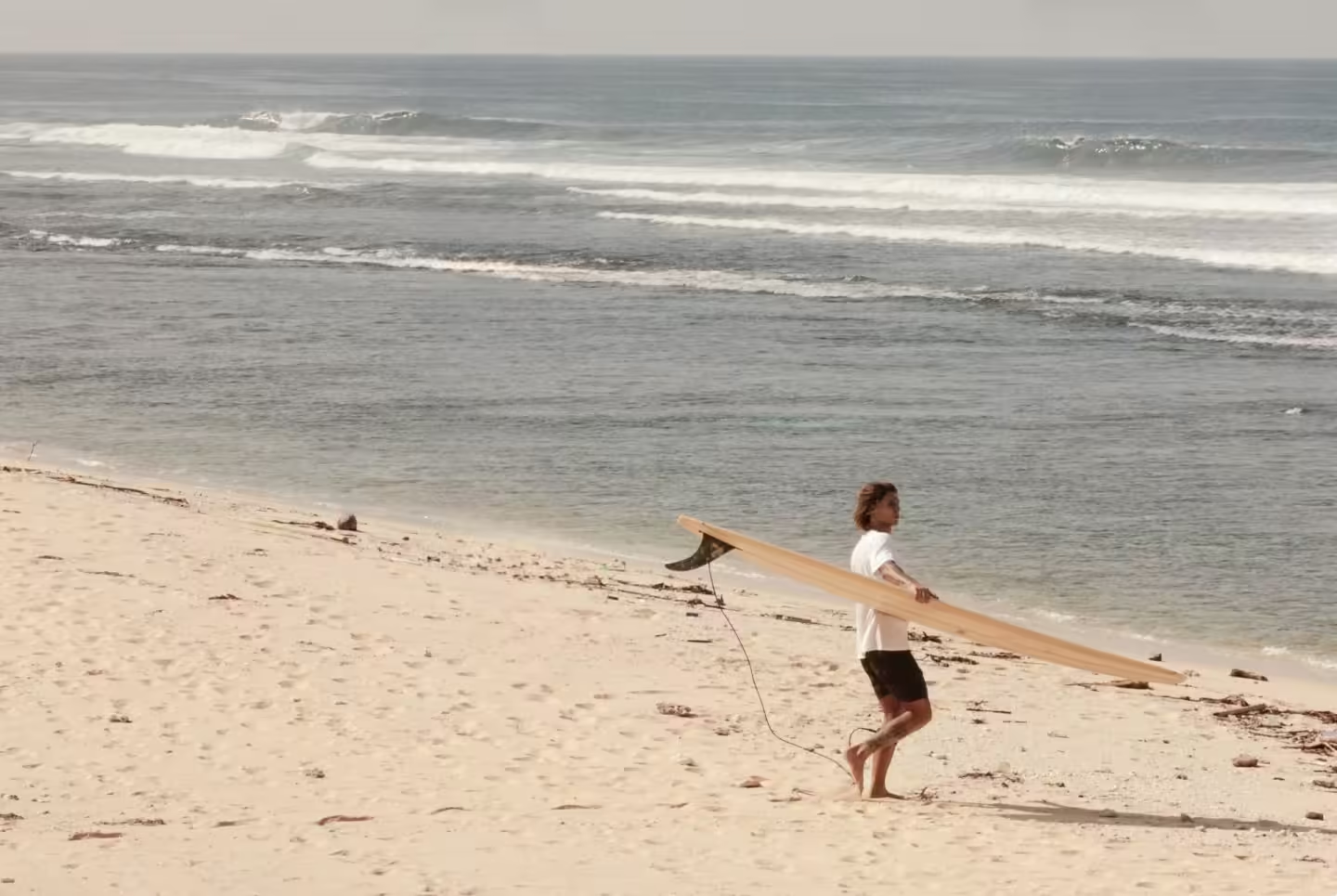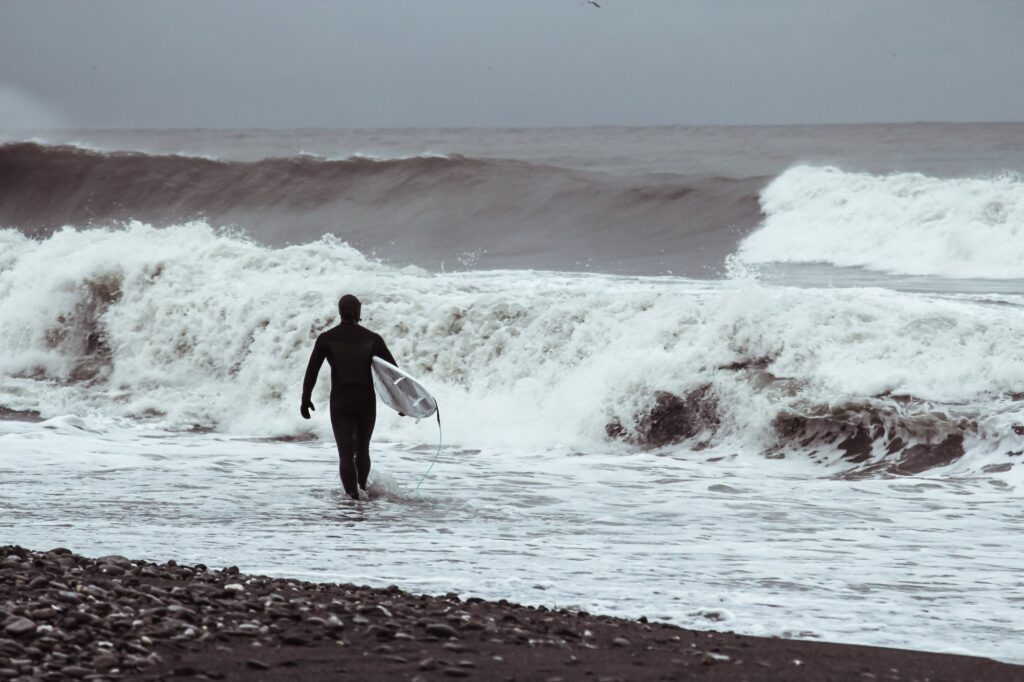Is Surfing Better In The Winter?
Surfing in the winter can seem like an intimidating challenge for many surfers. The thought of sand-covered beaches turning into snow-covered ones might send shivers down the spine of even the most experienced surfers.
However, the cold and rainy season comes with a few bright and interesting appeals that should not be overlooked.
While summer is often seen as the season of surfing, it also brings with it flat spells, ankle-high waves, and super crowded lineups.
In this post, we’ll explore why surfing in the winter can be a great experience and why it’s worth considering for anyone who’s passionate about surfing.
Before we begin, it’s important to note that the answer to this question varies depending on the location where you plan to surf.
Surfing in the winter can be very different in different parts of the world, like for example winter in Hawaii is characterized by big wave swells, while winter in Southern California is generally considered a low season for surfing.
Now let’s find out if surfing is better in the winter or in the summer.
Winter Brings More Storms
With great cold comes great storms, like literally. Winter is the season when the North Atlantic and North Pacific are the most active, producing storms that can generate massive swells that travel across the ocean.
Generally what creates these storms is the temperature difference between the polar regions and the equator.
In the winter, the polar regions are colder than the equator, which creates a temperature gradient.
This temperature gradient creates a pressure gradient, which in turn generates winds that drive the formation of cloud storms. And then the magic happens — powerful waves.
When these storms generate waves, they produce what is known as a groundswell — a type of wave that is created by storms far out at sea and travels across the ocean.
Unlike windswell, which is created by local winds, groundswell is more consistent and predictable, which you might have guessed, makes it an ideal type of wave for surfing, as it provides longer rides and more opportunities for maneuvering on the wave.
In addition to creating larger swells, winter storms can also help to improve wave quality by reshaping the ocean floor.
Strong winds and currents associated with winter storms can move sand and sediment on the ocean floor, creating sandbars and other formations that can help produce better waves for surfing.
Advantages of Surfing In The Winter
While it’s hard to answer if surfing in the winter is better or not, we’ll leave this for you to judge as it depends on many factors.
Bigger and Better Wave Quality
One of the most significant factors that make winter a great season for surfing is the bigger waves and better wave quality.
In many locations around the world, winter brings more significant swells and stronger winds, which generate more powerful quality waves.
The reason for that phenomenon is due to the increasing winter storms we mentioned and how they create a groundswell.
For experienced surfers who enjoy challenging themselves, winter is the perfect time to catch larger waves.
These waves can provide an exhilarating experience that is unmatched by smaller waves during the summer months.
Fewer Crowds
Another advantage of surfing in the winter is that there are often fewer crowds. While the summer months bring an influx of tourists and surfers to popular surf spots, winter is considered an off-season for surfing in many locations.
This means that surfers who brave the colder water temperatures and weather conditions during the winter months may be rewarded with fewer people in the water and more waves to themselves.
Wildlife Sightings
Have you seen those videos of dolphins jumping next to fellow surfers? Well, winter can also bring an increase in wildlife sightings for surfers.
In many coastal areas, winter is the season when marine mammals, such as whales, dolphins, and sea lions, migrate closer to shore.
These animals can provide an exciting and memorable experience for surfers who are lucky enough to encounter them in the water.
Disadvantages of Surfing During The Winter
With all these amazing benefits, there are also a few disadvantages, and I’m sure you know them well.
In fact, these disadvantages are probably why you’re reading this post because for some it’s a good reason to not surf during the winter. Let’s explore them.
Cold Water Temperatures
The first and most dreaded reason to not surf in the winter. The water temperatures can be significantly colder than during the summer months, which can make it more difficult to stay in the water for extended periods of time.
The water can be so cold in some places that it takes a millisecond to take your feet back out of the water.
But as you know, this is why wetsuits were invented – they can help to keep you warm in the coldest water and it does an amazing job.
Furthermore, wetsuits and other cold water gear are essential to staying warm while surfing in the winter.
However, for some surfers, the cold temperatures may be too uncomfortable to enjoy the surfing experience fully.
Stronger Currents
Winter storms can bring stronger currents and rip currents, which can be dangerous for inexperienced surfers.
It’s essential to be aware of the conditions and take appropriate safety precautions, such as checking the weather and surf reports before entering the water.
Additionally, and really importantly, surfers should always surf with a buddy or in a group to ensure that someone is available to help in case of an emergency, especially in the winter.
Shorter Days
If you don’t surf early in the morning this might be relevant to you, but during the winter months, the days are shorter, which means less daylight for surfing.
This can make it more challenging to find time to surf during the day, particularly for those who work traditional 9-5 jobs.
Surfing before or after work may not be an option for some surfers who live far from the coast or who have other responsibilities to attend to.
Is Surfing Better In The Summer?
Winter surfing may have its perks, but let’s not forget about the joys of surfing during the summer months.
For starters, summer is the peak season for surfing in many locations, which means more surfers in the water.
Sure, this may sound like a bummer, but think of it this way: more surfers, more friends, more high-fives, and more opportunities to bond with like-minded wave warriors.
But wait, there’s more — Summer water temperatures are downright balmy compared to the chilly winter swells.
This means you can ditch the thick wetsuit and enjoy the refreshing feeling of saltwater on your skin without the added layers.
Plus, with longer days come more daylight hours for surfing, so you can catch some waves before work, after school, or even during your lunch break (if you’re lucky enough to live near the beach).
So, while winter surfing may have its merits, don’t overlook the sheer joy and good vibes that come with summer surfing.
Final Thoughts
While it’s hard to answer whether the winter weather is better for surfing than other seasons, as it all boils down to personal choice, we’ve covered some factors that can help you decide.
For those who like to challenge themselves and catch some gnarly waves, winter can be a prime time to hit the water.
Fewer crowds and improved wave quality can lead to a more enjoyable surfing experience. However, winter surfing does come with its fair share of challenges.
Think freezing water temperatures, gnarly currents, and shorter daylight hours.
And if you choose to shred the waves during the winter, make sure to take proper safety precautions and invest in some warm gear to keep yourself from becoming a human icicle.
At the end of the day, whether you choose to brave the winter swells or catch some rays during the summer months, surfing is an exhilarating activity that provides a connection to the ocean and the natural world.



